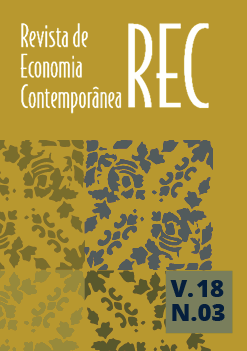Advertising investment as a tool for boosting consumption: testing Galbraith’s hypothesis for Spain
Palavras-chave:
advertising investment, Galbraith’s hypothesis, macroeconomic effects, unemploymentResumo
The recession that most of the world economies have been facing in the last years has caused a great interest in the study of its macroeconomic effects. In this context, a debate has resurged regarding the advertising investment, as for its potential capacity to impel the consumer spending and to impact positively on the economic recovery. This idea, sustained in the so-called Galbraith’s hypothesis, constitutes the core of this paper, where the main objective is to test that hypothesis by means of an empirical analysis. In this study, we focus on the Spanish case and the data correspond to the period 1976 -2010. A cointegration analysis is carried out, using two different approaches (Engle-Granger test and Gregory-Hansen test, respectively), to determine if there is any relationship between the advertising investment and six macromagnitudes (GDP, National Income, Consumption, Savings and Fixed Capital Formation), as well as the registered unemployment rate. Based on the results obtained, we conclude that Galbraith’s hypothesis is not fulfilled for the Spanish case.Downloads
Não há dados estatísticos.
Downloads
Publicado
2019-03-22
Edição
Seção
Artigos
Licença
Copyright
Todo conteúdo é publicado sob a licença Creative Commons do tipo CC-BY, exceto quando especificado.
=====
Todo el contenido se publica bajo una licencia Creative Commons CC-BY, salvo que se indique lo contrario.
Todo el contenido se publica bajo una licencia Creative Commons CC-BY, salvo que se indique lo contrario.
=====
All journal content, except where identified, is licensed under a Creative Commons attribution-type CC-BY.


